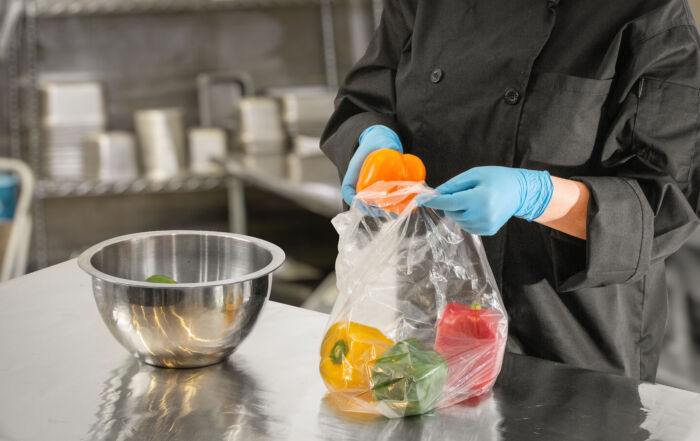Be Cool, Chill Out, Refrigerate Promptly!
The Cold Chain — Keeping perishable foods at proper cold holding temperatures (between 28°F and 41°F maximum or 0°F for frozen food) from your food producers / manufacturers to your customers has to be one of our strongest links to safe food and high quality. Sometimes that is referred to in the food industry as “maintaining the COLD CHAIN”. Any slip ups in the cold chain, and we have a weak link. Most all of our state food regulations require 41°F as a cold maximum, but colder is a “best practice” policy to maintain.
The Flow of the Food—In food service we refer to the stages that food travels through on its precarious route to our customers, as the flow of the food. Our “be cool” theme above must be in action. Those cold stages requiring refrigeration or control of the cold food temperature typically are:
1. Receiving cold perishable or frozen foods
2. Cold storage and thawing of potentially hazardous and perishable food
3. Maintaining the cold temp. during preparation
4. Cold holding after food preparation
5. Rapid cooling if a leftover cooked food (within 4-6 hours maximum)
6. Cold foods served to the customer
The Stem Thermometer or Thermocouple is the critical tool for checking our food temperatures, particularly upon receiving foods from your suppliers. If that weak link happens at supplier transportation level, reject the food shipment. The thermometer must be used throughout the work day and maintain daily temperature charts. As for your temperature readings, the colder, the better! Especially for fish, meats, and poultry. The colder your refrigeration equipment can keep chilled foods without freezing them, the longer the shelf life of the food. Storing cold food at an internal temperature of 35°F instead of 41°F might double the shelf life of some foods.
Cold Capacity –Refrigeration units, refrigerated prep tables, deli cases, and walk-in coolers all differ in their capacity to keep foods cool and recover after being open. That’s especially true in a hot kitchen. In all instances, the air inside the refrigerated compartment must be a few degrees colder than 41°F to assure that cold food internal temperatures are held at 41°F or below. For example, if you want your food to cold hold at 35°F, you refrigeration unit has to run an air temperature of 31°F to 32 °F. Storage sections near the cooler compartment door are always warmer.
Take Cold Storage Temperatures & Save Money —Dairy, fresh seafood, poultry, meat and deli type meat suppliers recommend 28-35°F internal temperature for optimum freshness and shelf life. FDA recommends 41°F for most fruits and vegetables (other than whole tomatoes that are ripening, bananas, raw potatoes, etc. that can be room temperature).
Pre-chilling Cut Fruits, Vegetables, & Salad Ingredients — Cut tomatoes and cut greens have been the cause of many outbreaks, so the FDA Food Code requires that once they are cut, they must be held cold at 41°F or below. It’s always a good idea to pre-chill any ingredients for salads before mixing them (examples: chicken or tuna salad, salsa ingredients, etc.).
Use that thermometer several times a day and record temperatures. Teach the food service crew what it really means to “be cool, chill out, and refrigerate promptly”.
[download id=”818″]
***
About the Author: Lacie Thrall

READ MORE POSTS
Preventing Norovirus in your Foodservice Operation
Norovirus is one of the leading causes of vomiting and diarrhea in the United States, [...]
Safe Handling of Leftovers in Foodservice Operations
In any foodservice operation, leftovers are inevitable. After managing a family-style restaurant, where all-you-can eat [...]
Turn your Health Inspector into your Food Safety Ally
For many foodservice operators, keeping up with evolving regulations can feel like chasing a moving [...]
Time and Temperature: Why 41°F to 135°F?
In one of my last blogs, I mentioned the temperature danger zone, or TDZ, as [...]










